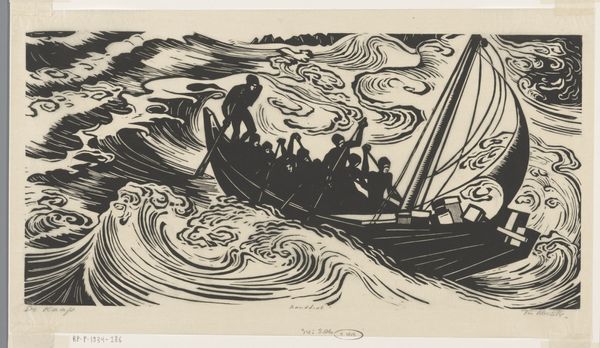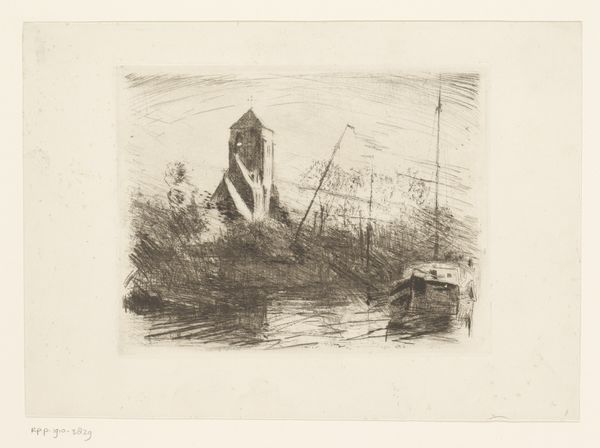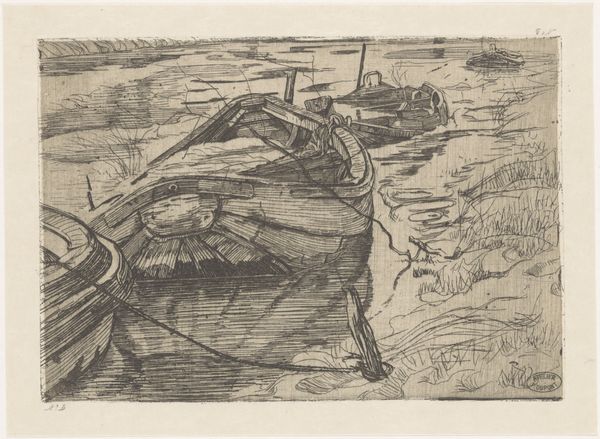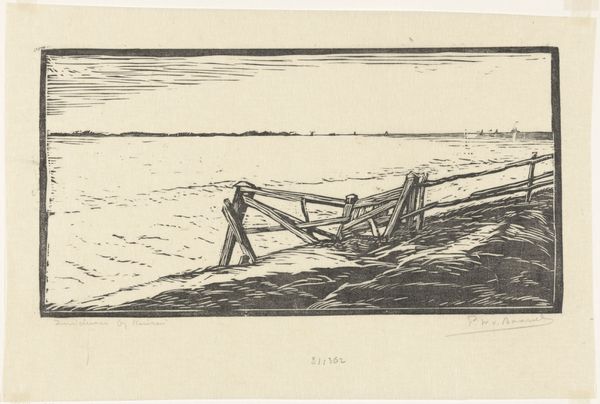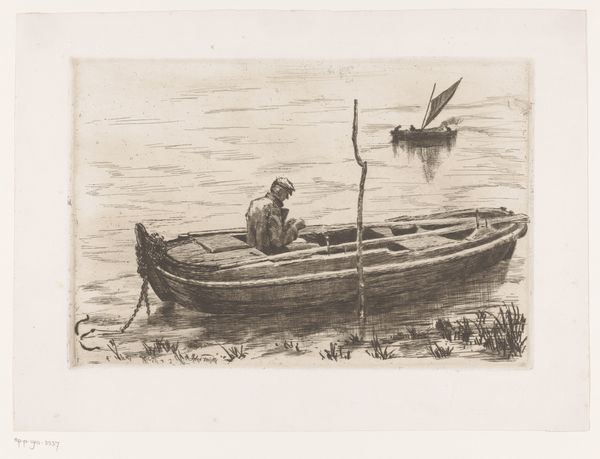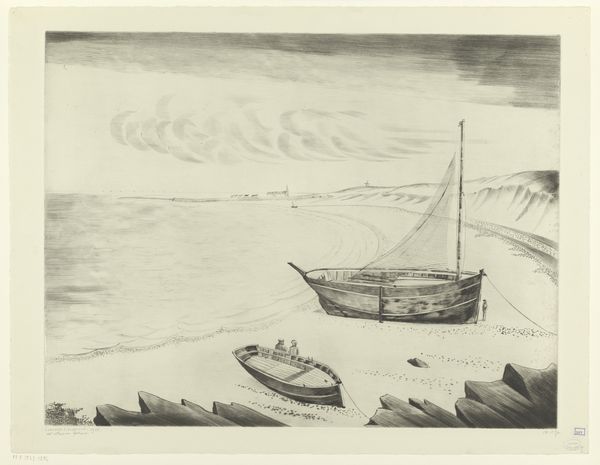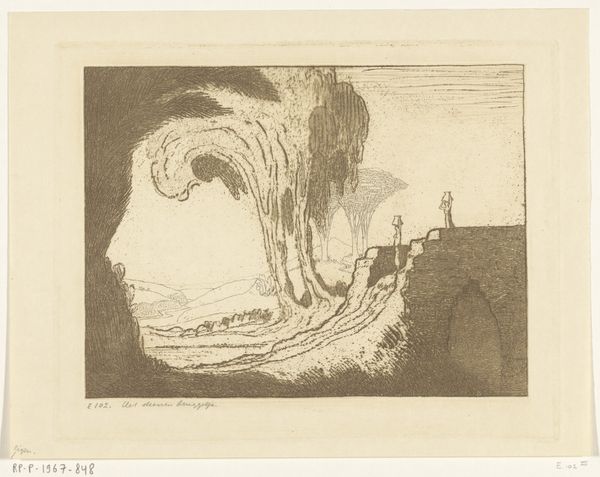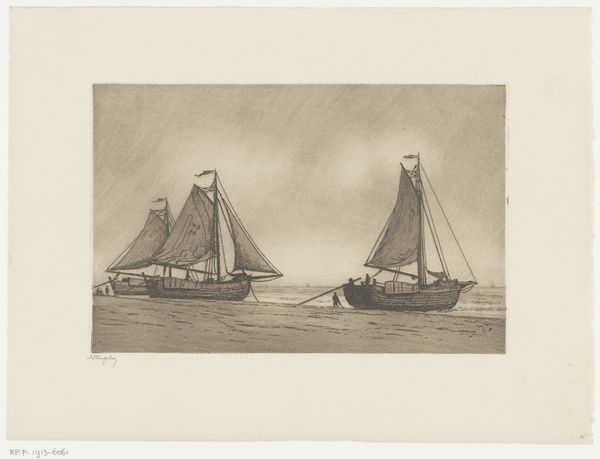
print, etching
# print
#
etching
#
landscape
#
figuration
#
cartoon carciture
#
realism
Dimensions: height 248 mm, width 322 mm
Copyright: Rijks Museum: Open Domain
Curator: This etching, dating from 1929, is titled "Scheepswrak op een Bretons strand," or "Shipwreck on a Breton Beach" created by Lodewijk Schelfhout, residing here with us at the Rijksmuseum. Editor: It’s immediately striking; there's a bleak, almost desolate feeling emanating from this shipwrecked vessel, stark against the sky. The rendering of clouds almost caricatures the ominous feeling it elicits. Curator: Right. Schelfhout produced this work during a period of significant social and economic upheaval following World War I. He would have experienced first hand how political forces disrupt the social fabric. Looking closely at the way he’s rendered the lone figure pulling at the ship… does it resonate with the labor disputes and the fight for fair representation from the working classes that defined much of Europe at the time? Editor: Possibly. The figure is rendered rather simplistically; an every-man. I think Schelfhout is perhaps evoking the powerlessness felt across society at the time, how even through diligent struggle against external forces— the wreck—it’s to no avail. Is it really possible for one person to rescue the ship, or the system, if you will? Curator: Indeed. Consider also the symbolism inherent in the shipwreck itself. What societal structures are lying in ruin? We also can see here an appeal to art as public service, wherein the artist uses his craft to promote societal awareness. Editor: Absolutely, the shipwreck and the single laborer is surrounded by very defined hard dark rocks and cliffs as though to close it off; perhaps an apt metaphor for feelings of economic entrapment felt in post-war society. The dark lines add a strong element of graphic drama and emphasize the hardship depicted in the print. The composition guides the viewer's eye, pulling us toward the struggle taking place. Curator: I am inclined to agree. Thank you for bringing to light all that the piece has to offer when analyzed through the lens of critical theory. Editor: And thank you, for allowing this forum for socio-political discussions of such visuality, in an analysis which accounts for how cultural context informs and shapes the experience of the piece itself!
Comments
No comments
Be the first to comment and join the conversation on the ultimate creative platform.


